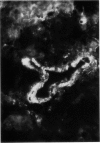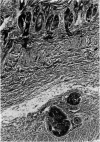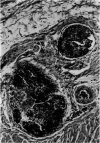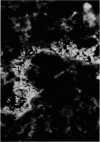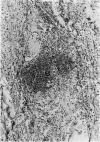Abstract
The active Arthus reaction can be inhibited by hypovolemic shock or the infusion of catecholamines. A reevalution of previous work with platelet antiserum indicates that shock rather than thrombocytopenia was responsible for preventing the active Arthus reaction. Immunofluorescent studies of the inhibited Arthus sites reveal that immune precipitates are not present in the extravascular tissues. Since leukocyte aggregates can be seen within venules at the inhibited sites, and they phagocytize BSA-anti-BSA complexes, their failure to migrate out of the vessels is due to the absence of complexes in the extravascular spaces. (Am J Pathol 78:159-170, 1975)
Full text
PDF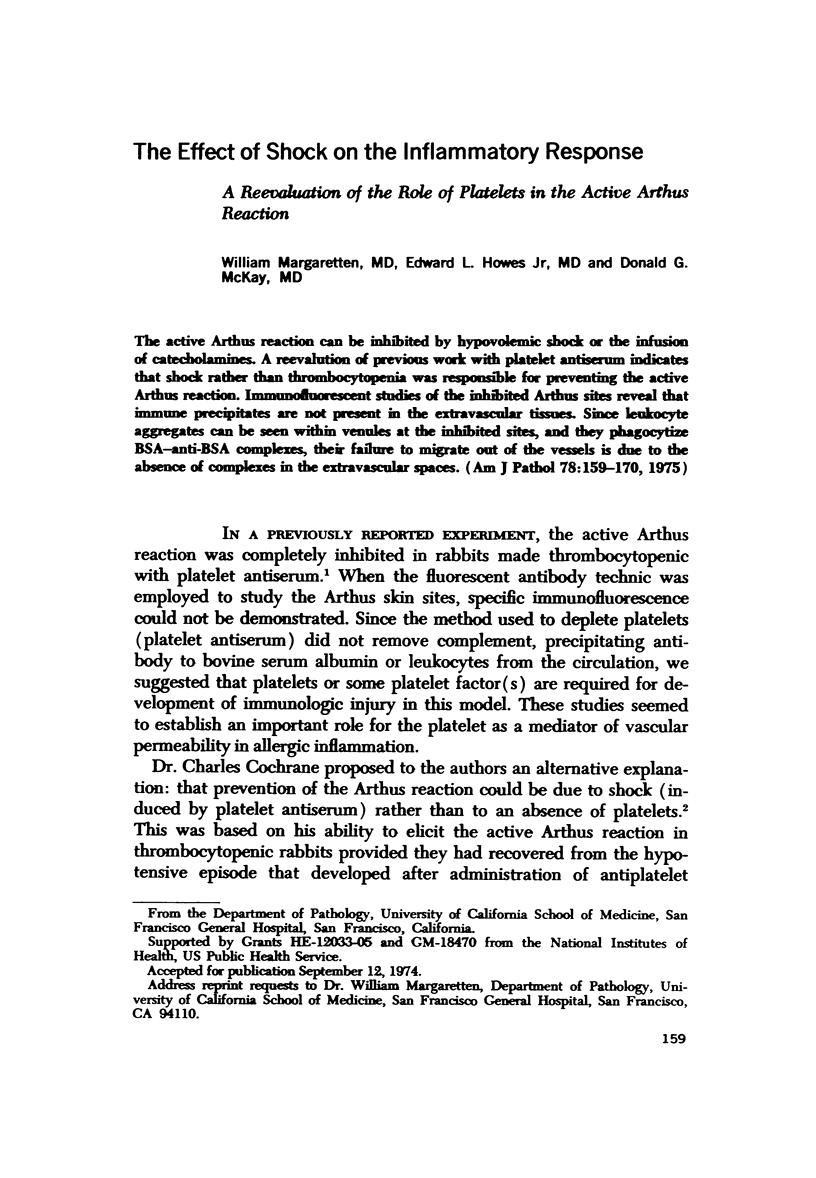
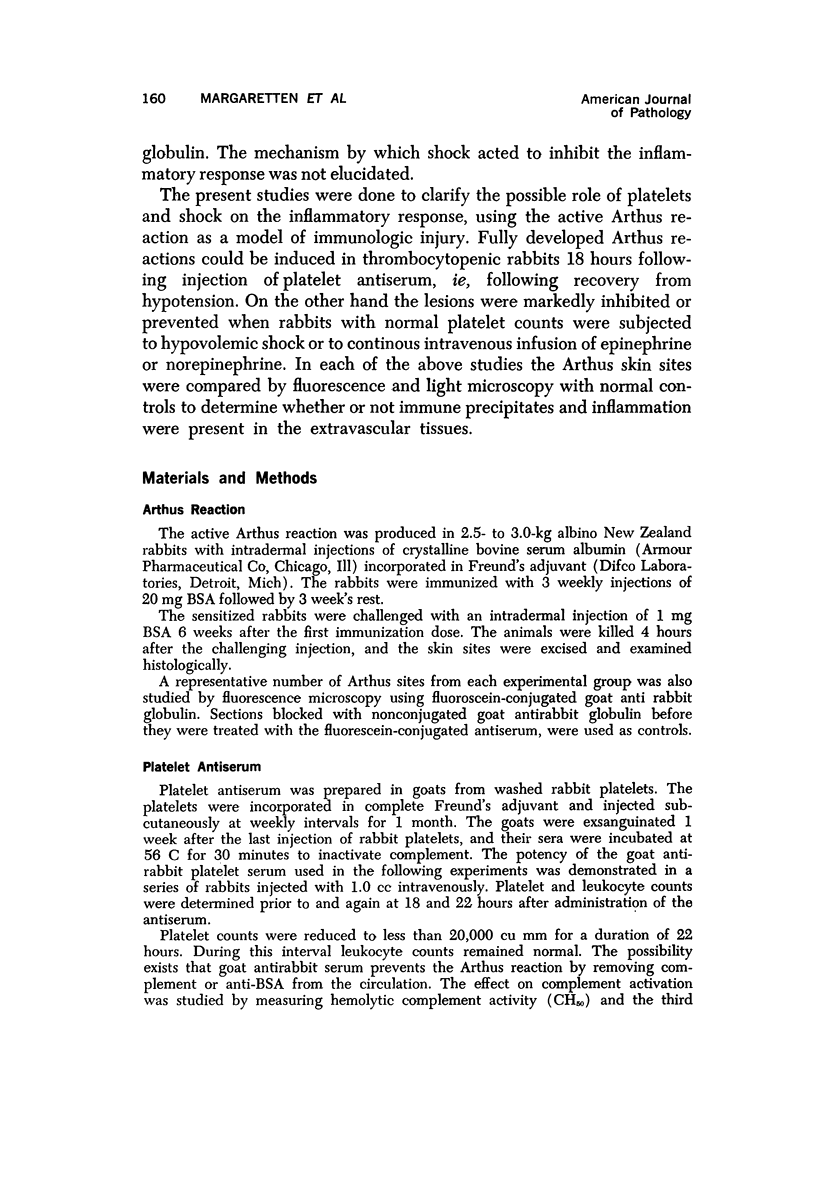
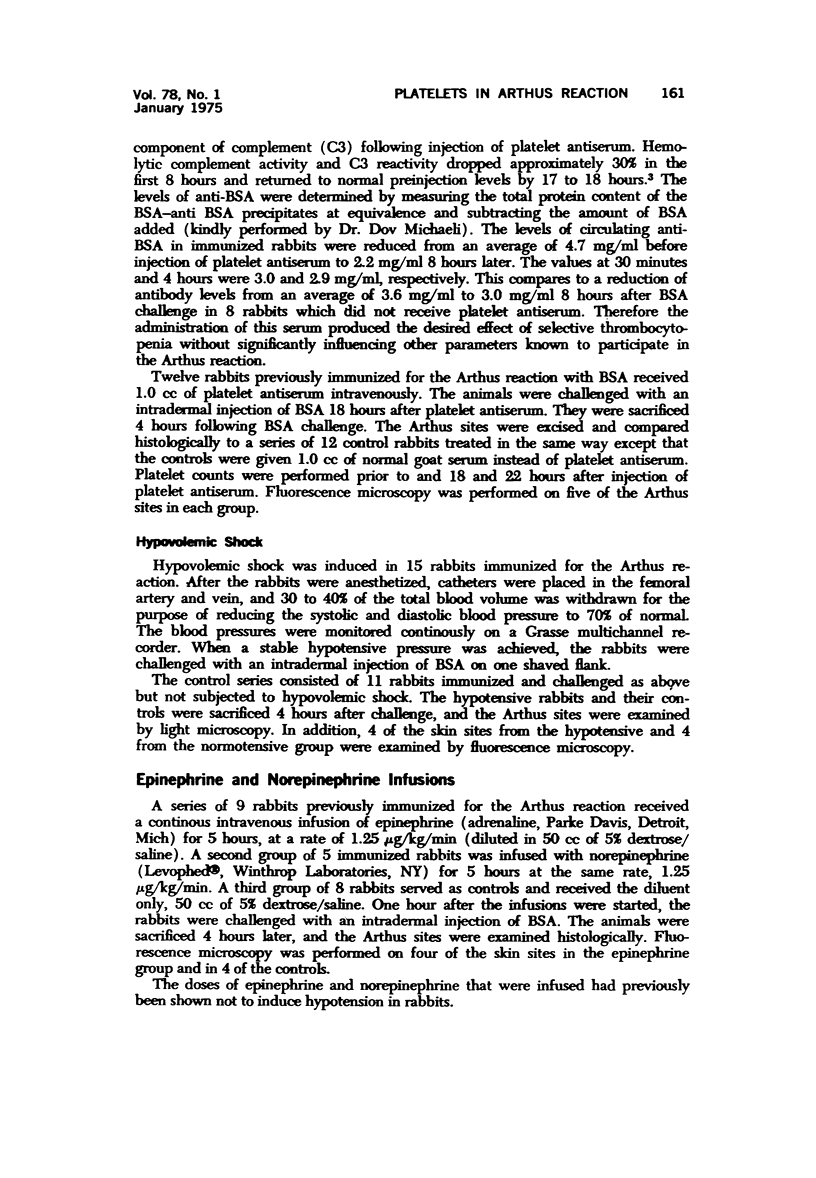
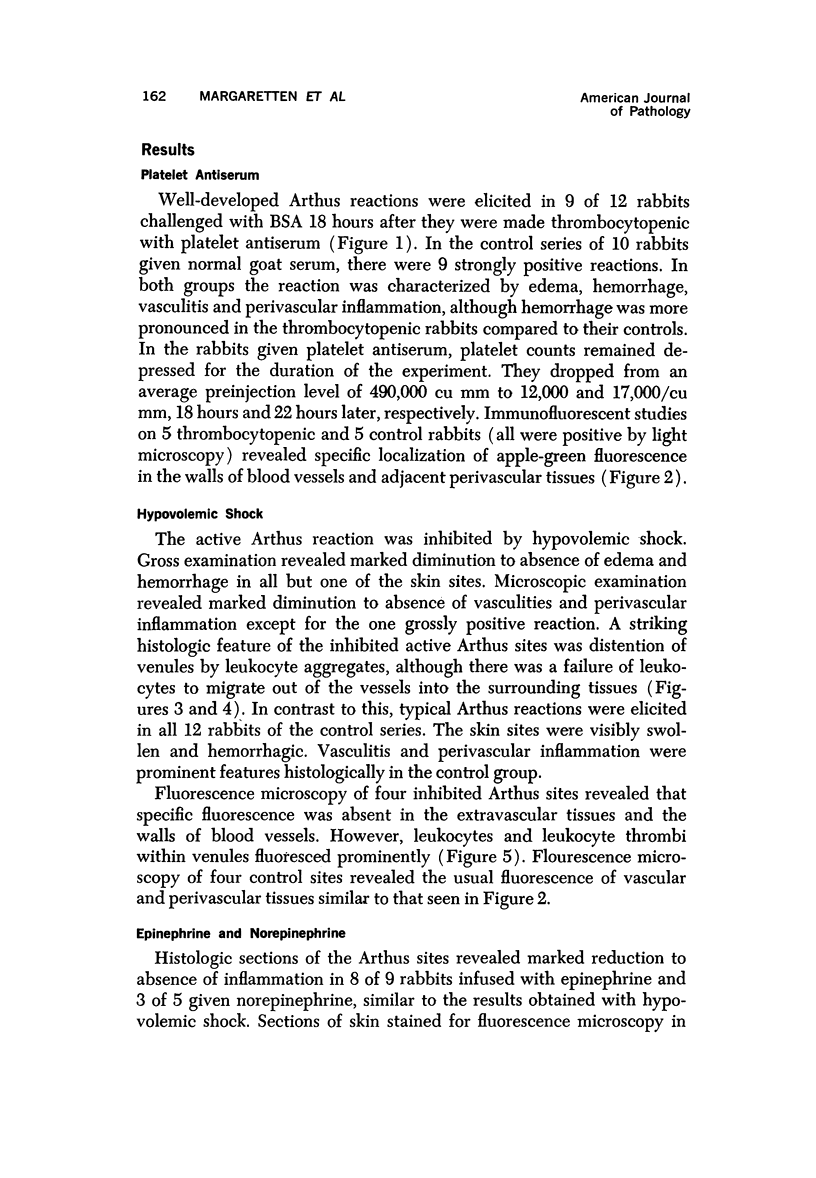
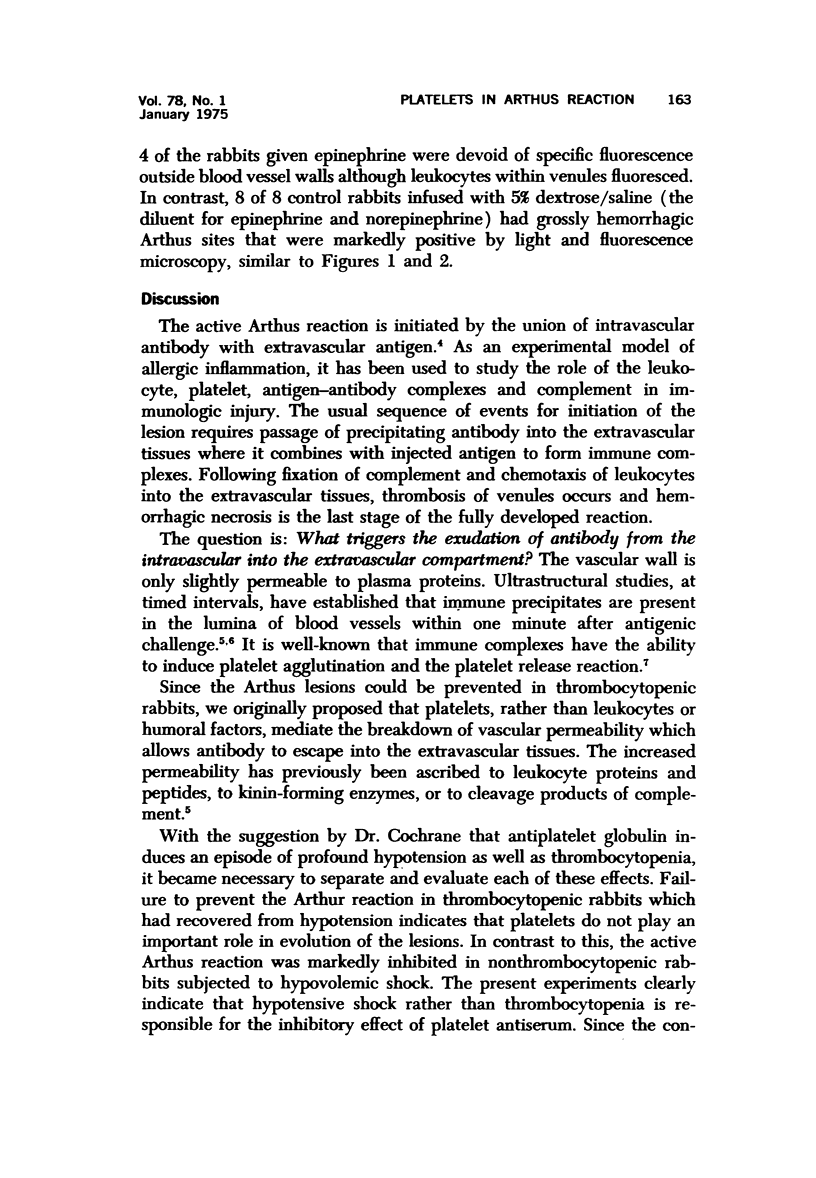
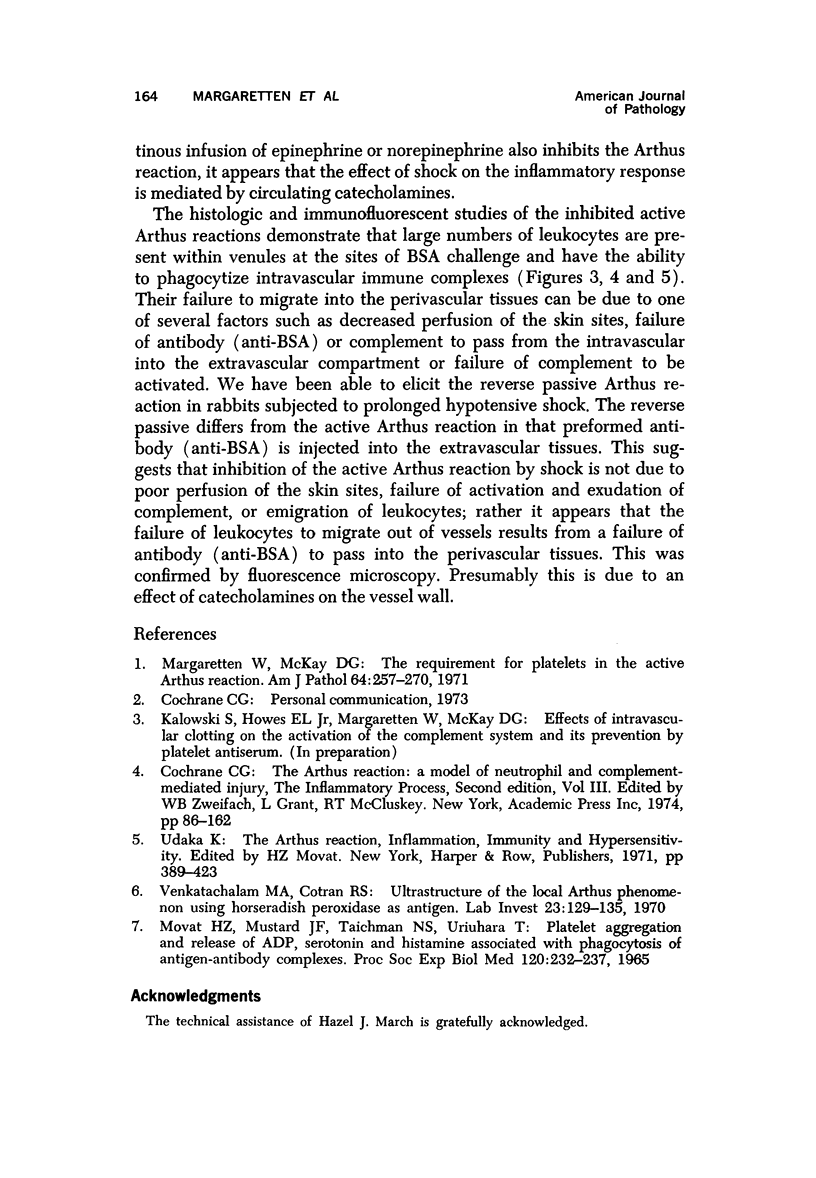
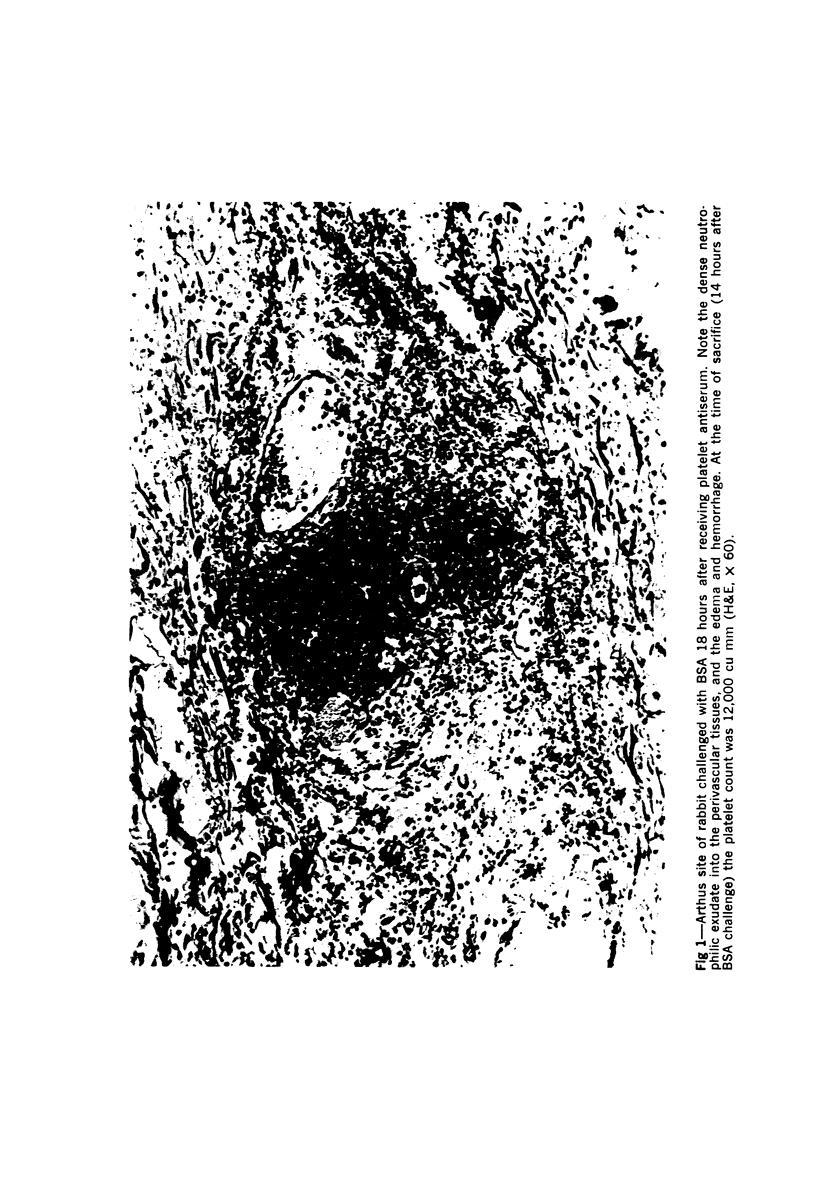
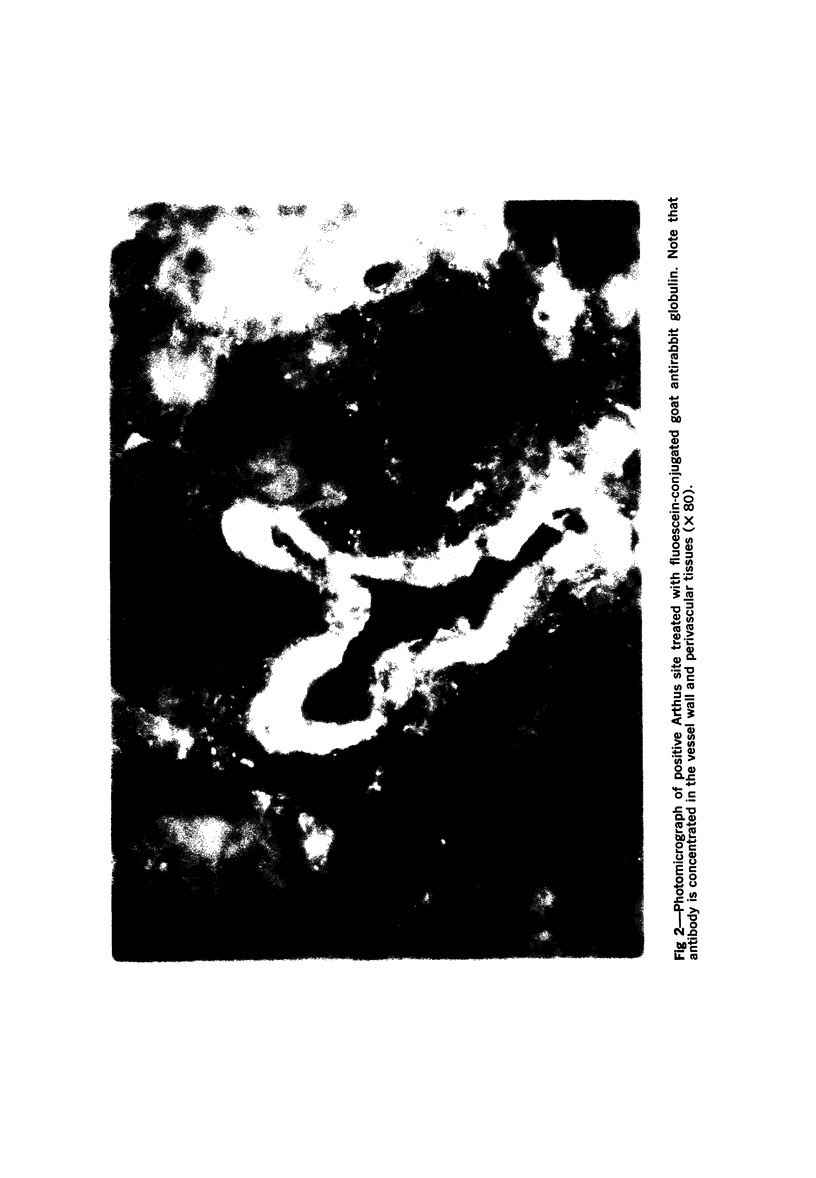
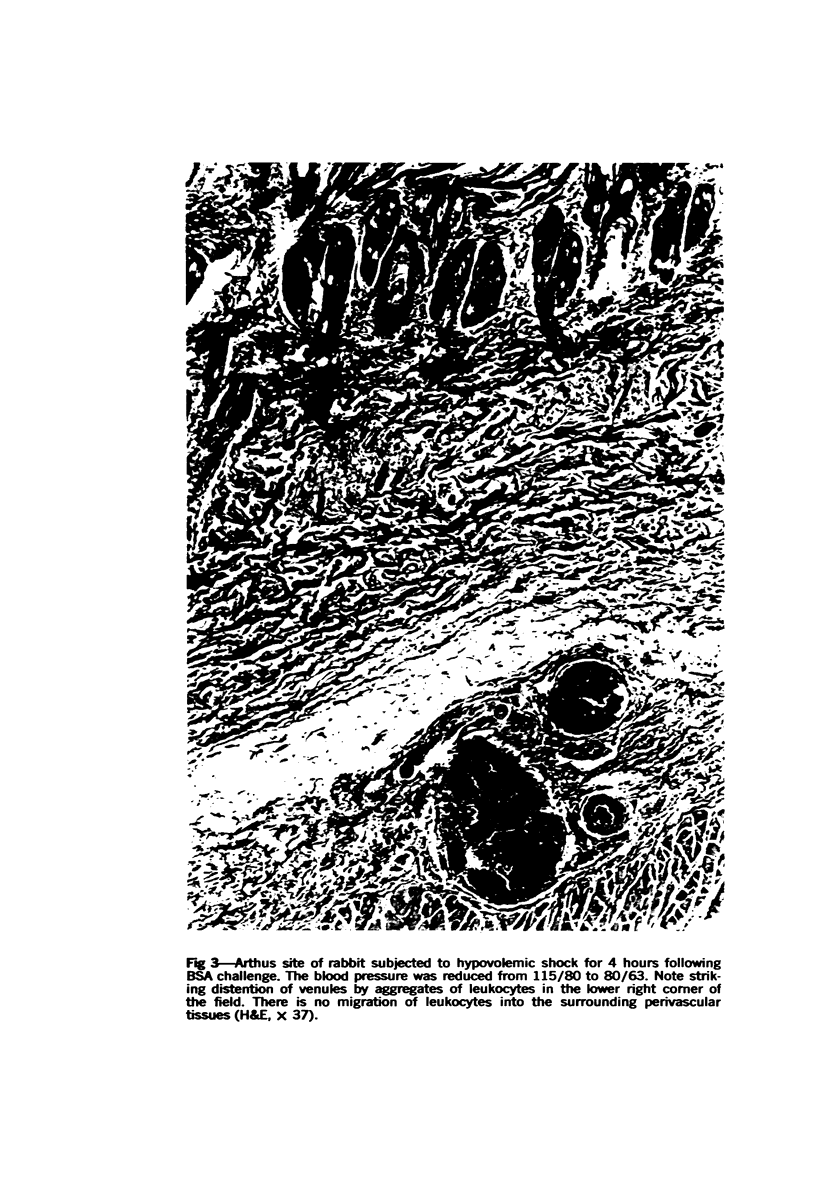
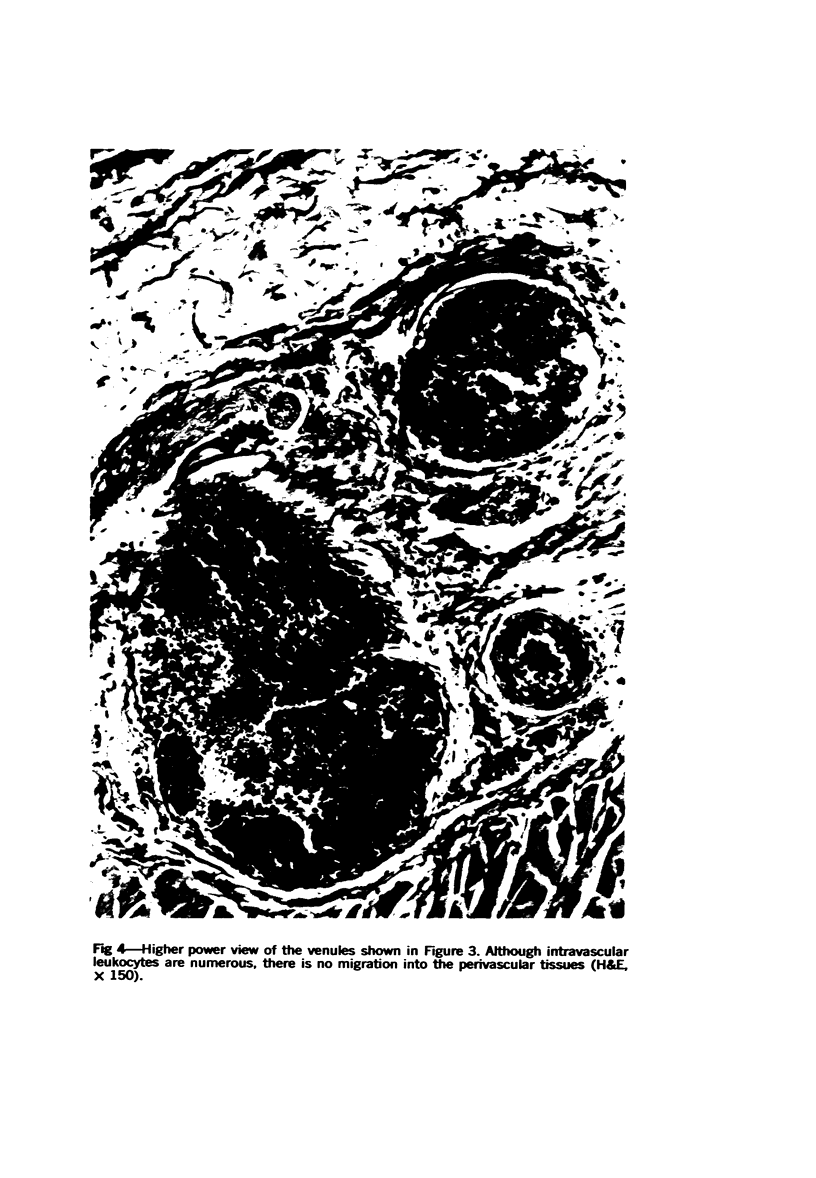
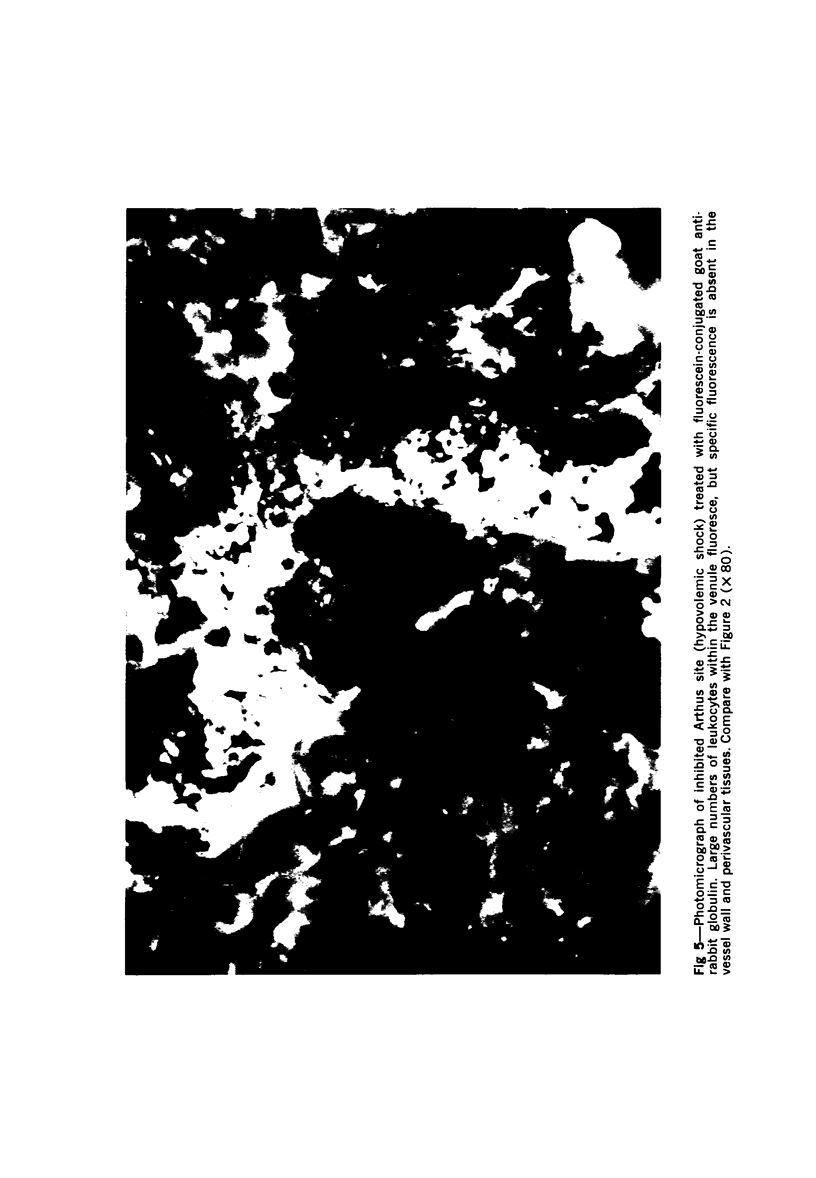
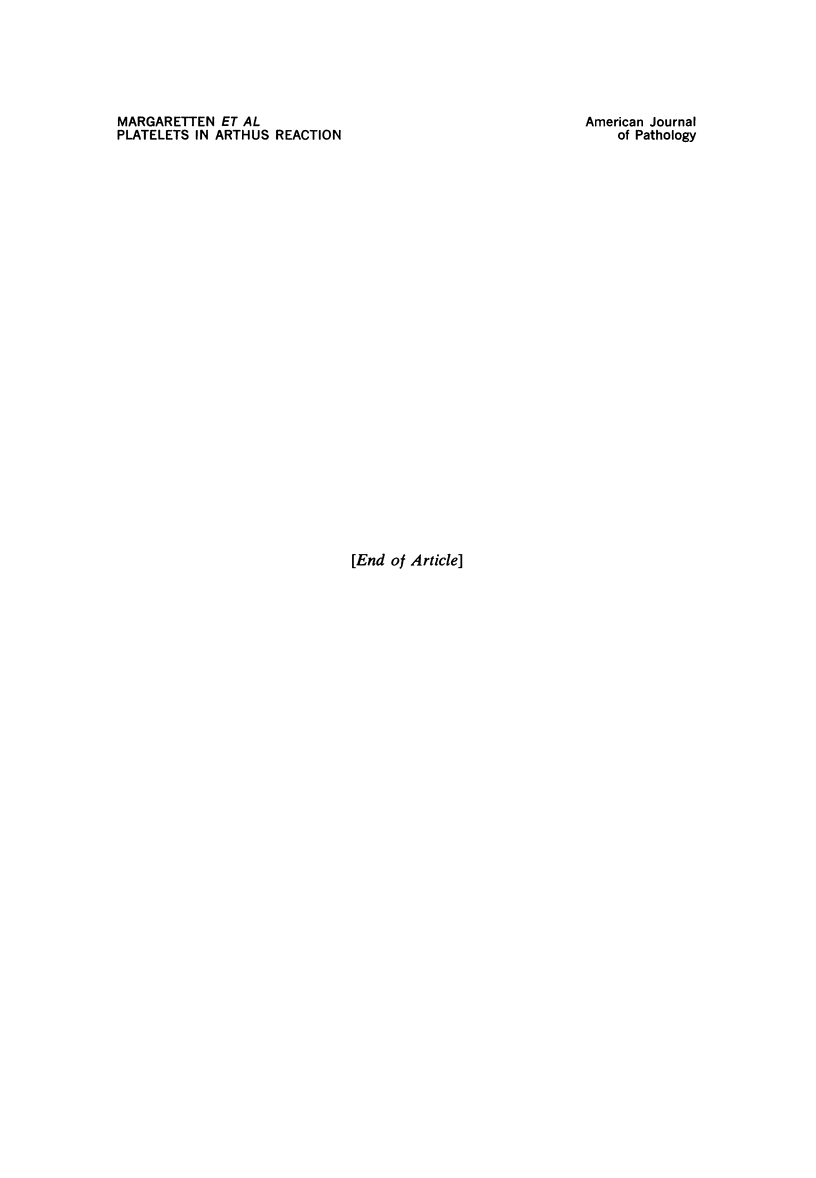
Images in this article
Selected References
These references are in PubMed. This may not be the complete list of references from this article.
- Margaretten W., McKay D. G. The requirement for platelets in the active Arthus reaction. Am J Pathol. 1971 Aug;64(2):257–270. [PMC free article] [PubMed] [Google Scholar]
- Movat H. Z., Mustard J. F., Taichman N. S., Uriuhara T. Platelet aggregation and release of ADP, serotonin and histamine associated with phagocytosis of antigen-antibody complexes. Proc Soc Exp Biol Med. 1965 Oct;120(1):232–237. doi: 10.3181/00379727-120-30496. [DOI] [PubMed] [Google Scholar]
- Venkatachalam M. A., Cotran R. S. Ultrastructure of the local Arthus phenomenon using horseradish peroxidase as antigen. Lab Invest. 1970 Aug;23(2):129–135. [PubMed] [Google Scholar]



